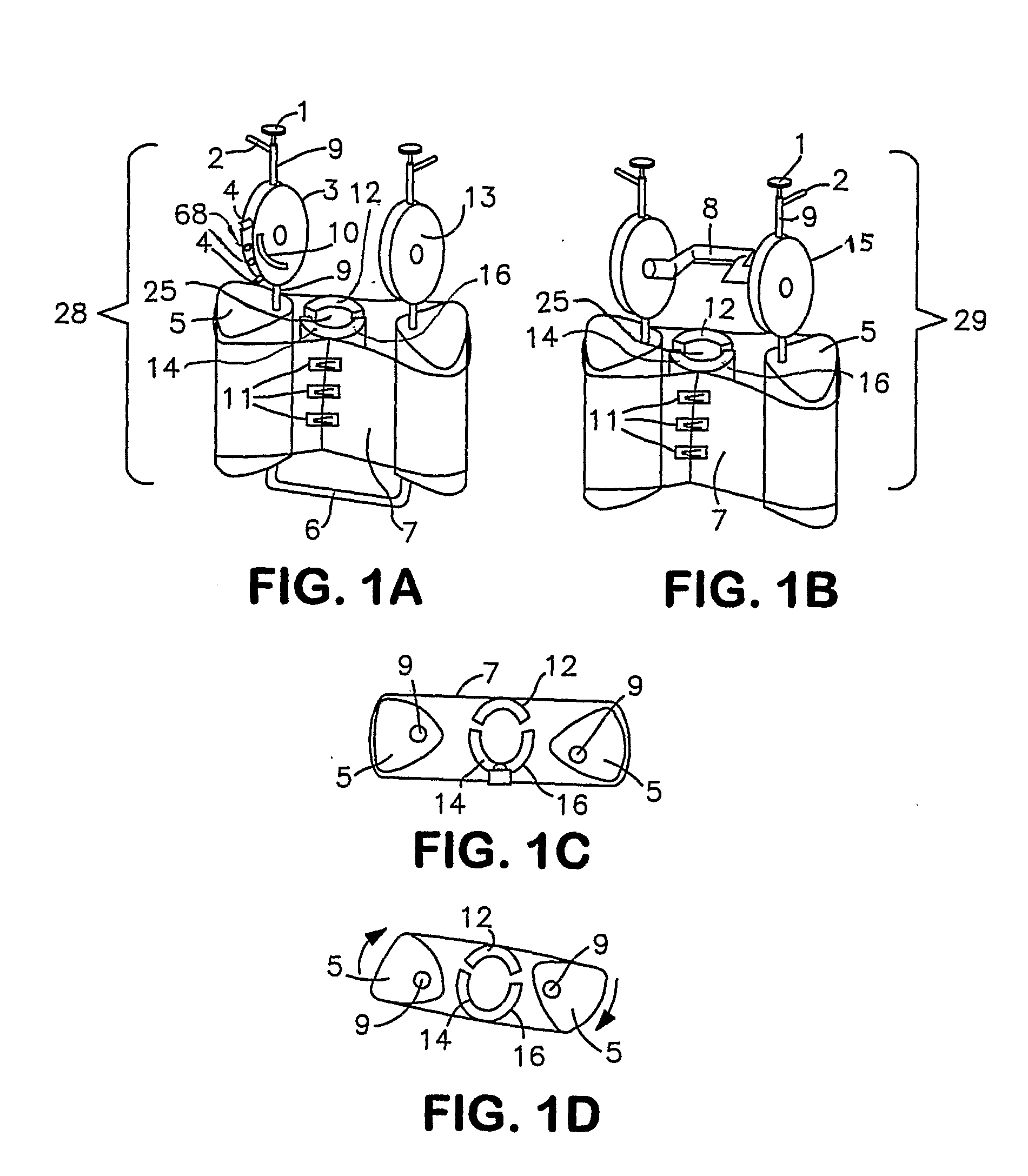[0006]The present invention helps patients restore the
rotational alignment of the malaligned knee to that of a healthy knee, and restore the knee function by regaining the
range of motion and strengthening of the knee muscles. Therefore, it can ultimately correct the
deformity to the extent allowed by the underlying
articular cartilage structural damage. Accordingly, the present invention provides a method of
leg exercise that can help treat knee
osteoarthritis by simultaneously correcting the knee rotational malalignment and restoring the knee function, which allows for an optimal loading distribution across the
knee joint and ultimately minimizes
cartilage degeneration.
[0009]In a further embodiment, one or both range limiters can include a range limiter track through which an immovable range limiter bar can extend, thereby constraining the range of leg flexion and / or extension during exercise. The flexion / extension range can be further controlled by range limiter pins positioned at
variable locations within a range limiter track. In one embodiment, a plurality of passages can extend through the range limiter so that a range limiter pin placed within one or more of the plurality of passages can obstruct the range limiter track, thereby limiting the leg's
range of motion. The range limiter track can be any portion of a notional circle centered on the center of rotation of the range limiter
assembly. Preferably, the portion can be between 110° to 130° of a notional circle, more preferably approximately 120°, wherein approximately 120° can be between 115° to 125°. A series of equally spaced pin receiving passages within a 1200 range limiter track can control extension / flexion in 5° increments. Thus, by varying the number of passages to the range limiter track, the incremental control can be varied.
[0011]A further embodiment of the invention can be a
cuff that can include a calf pad, a left shin pad, and a right shin pad. The right shin pad can comprise a plurality of pads wherein each of the plurality of pads can be positioned at a different
vertical distance from the knee joint. In a preferred embodiment the right shin pad comprises three such pads. The left and right shin pads can be connected to opposite ends of the calf pad by an elastic material to provide support as the user inserts a lower leg into the
cuff. Each pad can also be connected to the sheet so that rotation of the rotational drums can generate a rotational, as well as compressive, forces on the tibia secured by the cuff.
[0012]To assist in generating forces suitably positioned on the tibia, a series of straps, with at least one strap for each pad of the right shin pad, can be connected to the end of the calf pad to which the right shin pad is connected. Strap guides can be connected to the plurality of right shin pads to guide the straps from the calf pad, along the outward-facing side the right shin pad, and through the sheet. The straps can
traverse through the sheet by a series of straps holes in a region of the sheet to which the left shin pad can be connected. These straps can be tightened to secure the cuff around the tibial portion of the lower leg to reduce or eliminate slippage between the cuff and leg. The sheet can be discontinuous between the right and left shin pad-connecting region to facilitate cuff tightening by the belts for various sized legs.
[0015]Resistance means can be generated as known in the art and can include elastics, springs, hydraulics or a
brake. In one embodiment, a rubber
brake attached to one end of the resistance adjustment pin can contact the
vertical bar inside the range limiter disk so that tightening the pin can increase the friction between the
vertical bar and the rubber
brake, thereby increasing the force required to rotate the lower leg. The resistance adjustment pin can be connected to the free end of the
vertical bar so that adjusting the pin increases the resistance between the resistance means and the vertical bar. Alternatively, one end of the resistance adjustment pin can be positioned on the outside of the range limiter, with a portion of the pin traversing a passage through the range limiter so that a rubber brake connected to the pin's other end can contact the vertical bar within the range limiter. Tightening the resistance adjustment pin can increase the rotational resistance; loosening the resistance adjustment pin can decrease or eliminate the rotational resistance.
[0018]The invention used in concert with weight training
exercise equipment can: (1) allow the knee to regain normal rotational range of motion and correct the rotational malalignment of the knee, (2) allow the knee to regain the
muscle function of rotational control, (3) restore the range of motion and
muscle strength of the knee, and (4) correct three-dimensional knee malalignment. The invention can be utilized by the younger
population, including
athletes as well as others, to correct rotational malalignment and can be used in
physical therapy clinics,
athletic training facilities as well as fitness centers.
 Login to View More
Login to View More  Login to View More
Login to View More 


